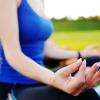CYBERMED LIFE - ORGANIC & NATURAL LIVING
CYBERMED LIFE - ORGANIC & NATURAL LIVING
 Yogic Technique - Sudarshan kriya: Sudarshan Kriya
Yogic Technique - Sudarshan kriya: Sudarshan Kriya
Sudarshan Kriya is a set of breathing techniques promoted since 1982 by Sri Sri Ravi Shankar, and is different from Kriya Yoga. Sudarshan Kriya is taught in various Art of Living programs.
A comprehensive scientific review in International Journal of Yoga apprises that Sudarshan Kriya Yoga (SKY) works on mental, physical and spiritual levels. Scientifically, Sudarshan Kriya improves antioxidant status at the enzyme and the gene level resulting in reduced DNA damage and cell aging. SKY practices have shown improved autonomic nervous system function, neuroendocrinal secretions, emotional processing, and social bonding through Vagal Nerve Stimulation and activation of the limbic system, hippocampus, hypothalamus, amygdala, and stria terminalis.
Sudharshan Kriya employs a variety of breathing patterns. Every emotion has breathing patterns; for example, if one gets angry then one's breath is short and fast. Similarly, breathing affects the mind (for example, a deep, long breath relaxes the mind.) Through breathing in different patterns, one can influence emotions and gain control over one's mind. Research suggested that it helps in improving well being (improving immunity and detoxification), and peace of mind (reduce stress, enhance brain function).
A research published in April 2013 observed that a comprehensive practice of Yoga, Sudarshan Kriya and Pranayam has rapid and significant effect on gene expression suggesting long term beneficial effects even at the molecular level.